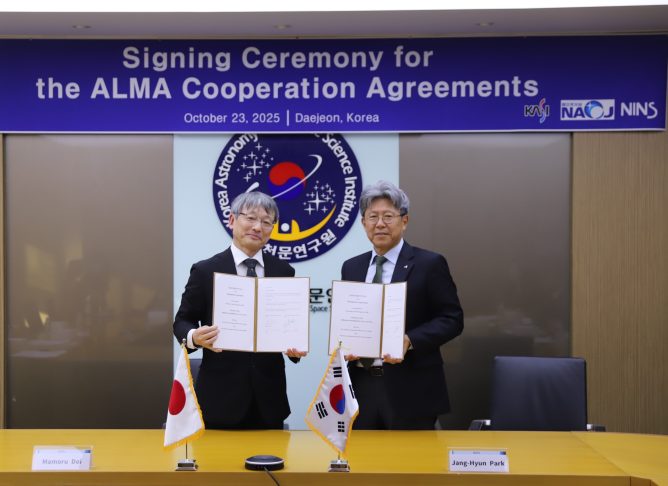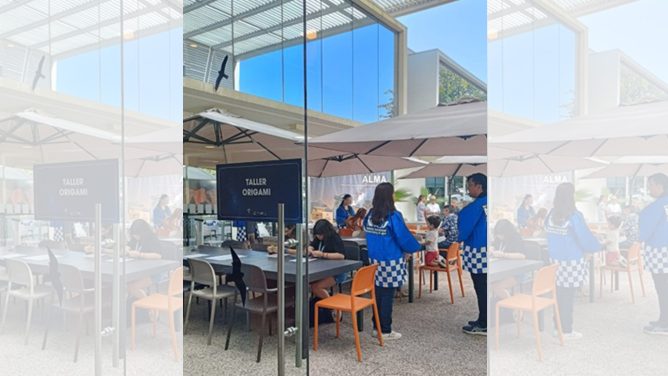On November 10 (Chilean Time), Band 10 receiver manufactured by the National Astronomical Observatory of Japan successfully received radio waves from a celestial objet for the first time in a test observation at the ALMA Operations Support Facility (OSF) at 2900 m above sea level.
The target object of this observation is radio source Sagittarius B2 (Sgr B2), which is an object with strong emission, located at near the center of our galaxy. The peak at the center of the graph indicates that the source has strong emission.

Celebrating the first spectrum, the observation staff signed on the spectral graph.
ALMA has10 types of receivers according to the frequency range from Band 1 through Band 10. Japan assumes the development and manufacture of three types of receivers, Band 4, Band 8, and Band 10. Although the development of the Band 10 receiver, covering the frequency range from 787 GHz to 950 GHz, was thought to be the most difficult among the ALMA receivers, it was successfully developed by NAOJ in 2009.
Submillimeter observations at the frequency range covered by Band 10 have not been made in earnest due to strong atmospheric absorption. With ALMA constructed at high altitudes at 5000 m above sea level, we will open the door to the submillimeter astronomy.
The Band 10 receiver passed the Manufacturing Readiness Review in June, 2012 and is now at the production phase. The team leader of the Band 10 development team, Yoshinori Uzawa (NAOJ Advanced Technology Center) comments, “I am full of emotion at this successful first spectrum recalling the start of the development 7 years ago with a feeling of anxiety. I didn’t have enough confidence to realize the Band 10 receiver at the beginning. I am thankful for all ALMA staff members who supported the development of the Band 10 receiver. The Band 10 team will work on the production of cartridges toward the installation on 66 antennas. “
This achievement demonstrates that all the three types of Japanese receivers successfully received radio waves from celestial objects. We have made a step closer to the realization of observations with Japanese receivers.
The group photo shows the pleasure of the staff with the successful first spectrum. The fifth from the right is Shin’Ichiro Asayama (assistant professor at NAOJ/ Senior RF engineer at JAO).
- Jun 16, 2009 Press Release:World’s Highest Performance Submillimeter (terahertz) Receiver – Band 10, the highest frequency receiver in ALMA, was successfully developed –
- Jun 08, 2012 Latest News:Band 4 & Band 10 Manufacturing Readiness Review (MRR)










